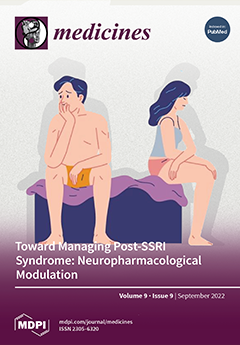Chest X-ray (CXR) characteristics of patients with drug-resistant tuberculosis (DR-TB) depend on a variety of factors, and therefore, identifying the influence of these factors on the appearance of DR-TB in chest X-rays can help physicians improve diagnosis and clinical suspicion. Our aim was to describe the CXR presentation of patients with DR-TB and its association with clinical and demographic factors. A retrospective analysis of the CXRs of DR-TB patients in Nigeria between 2010 and 2016 was performed, reviewing features of chest radiographs, such as cavitation, opacity and effusion, infiltration and lung destruction. The association of these abnormal CXR findings with clinical and demographic characteristics was evaluated using bivariate and multivariate models, and a
p-value < 0.05 was considered statistically significant with a 95% confidence interval. A total of 2555 DR-TB patients were studied, the majority (66.9%) were male, aged 29–38 years (36.8%), previously treated (77%), from the South West treatment zone (43.5%), HIV negative (76.7%) and bacteriologically diagnosed (89%). X-ray findings were abnormal in 97% of the participants, with cavitation being the most common (41.5%). Cavitation, effusion, fibrosis, and infiltration were higher in patients presenting in the South West zone and in those previously treated for DR-TB, while lung destruction was significantly higher in patients who are from the South South zone, and in those previously treated for DR-TB. Patients from the South East zone (AOR: 6.667, 95% CI: 1.383–32.138,
p = 0.018), the North East zone (AOR: 6.667, 95% CI: 1.179–37.682,
p = 0.032) and the North West zone (AOR: 6.30, 95% CI: 1.332–29.787,
p = 0.020) had a significantly increased likelihood of abnormal chest X-ray findings, and prior TB treatment predisposed the patient to an increased likelihood of abnormal chest X-ray findings compared to new patients (AOR: 8.256, 95% CI: 3.718–18.330,
p = 0.001). The finding of a significantly higher incidence of cavities, effusions and fibrosis in DR-TB patients previously treated could indicate late detection or presentation with advanced DR-TB disease, which may require a more individualized regimen or surgical intervention.
Full article




